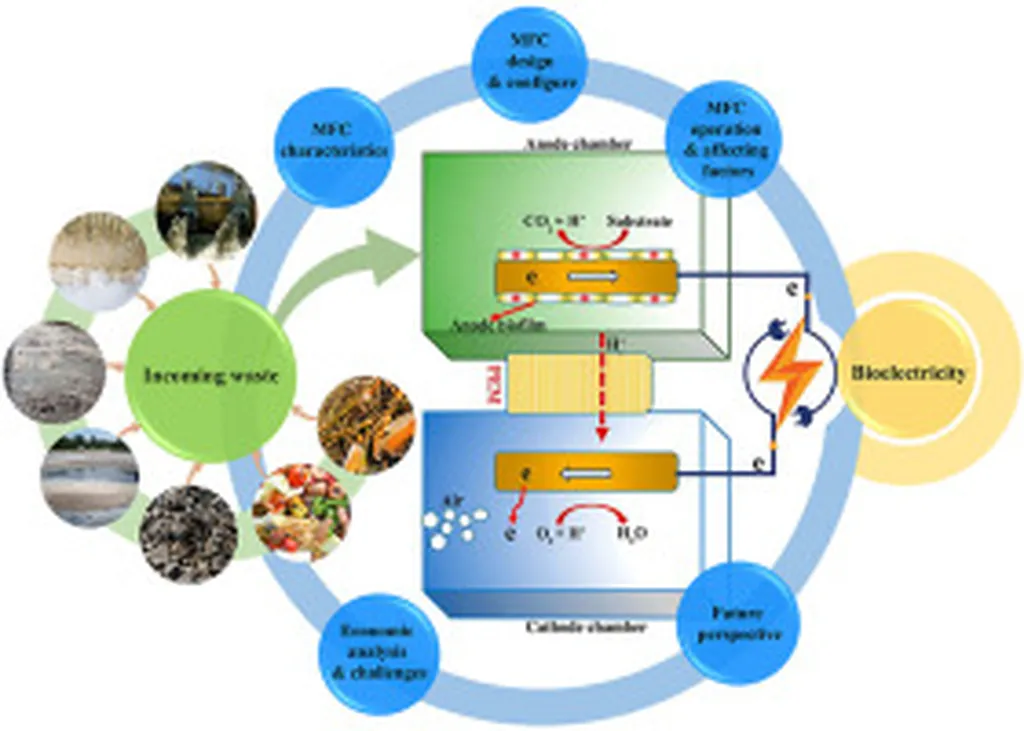In the quest for sustainable wastewater treatment and renewable energy, scientists are turning to an unlikely ally: microbes. A recent study published in *Results in Chemistry* delves into the intricate world of microbial fuel cells (MFCs), revealing how these tiny organisms can transform waste into valuable resources. The research, led by Soubhagya Nayak from the Environmental Bioprocess Laboratory at the National Institute of Technology Warangal, India, explores the electrochemical behavior and microbial dynamics within MFCs using a hybrid substrate of synthetic wastewater and human urine.
Microbial fuel cells are not a new concept, but their application with human urine as a substrate is relatively unexplored. Nayak and his team aimed to fill this gap by investigating how different concentrations of urine in synthetic wastewater affect the electrochemical performance and microbial community structure within dual-chamber MFCs. The study utilized electrochemical techniques such as cyclic voltammetry (CV) and electrochemical impedance spectroscopy (EIS) to gain insights into the system’s behavior.
The researchers operated three distinct batches of MFCs, each with varying concentrations of urine: 20%, 50%, and 75%. The results were intriguing. As the bacteria proliferated and biofilm developed on the anode, the area under the CV curve expanded, indicating an increase in the anode’s capacitance. This phenomenon suggests that the microbial community was becoming more efficient at transferring electrons, a crucial process in generating electrical energy from waste.
“Our findings demonstrate that human urine contributes essential ions and organic compounds that promote microbial diversity and enhance electron transfer processes,” Nayak explained. This enhanced electron transfer is a game-changer for the agricultural sector, where wastewater treatment and energy efficiency are paramount. The ability to harness energy from waste streams not only reduces the environmental footprint but also provides a sustainable energy source for agricultural operations.
The electrochemical impedance spectroscopy (EIS) assessments revealed another critical insight: the development of bacteria across the anode’s surface significantly reduced impedance. Lower impedance means better electron flow, which translates to more efficient energy production. This efficiency is particularly relevant for large-scale agricultural applications, where energy costs can be substantial.
The study’s implications extend beyond wastewater treatment. The enhanced microbial diversity and improved electron transfer processes could lead to more robust and efficient bioelectrochemical systems. These systems could be integrated into agricultural practices to treat wastewater, generate energy, and even produce valuable byproducts like biofertilizers.
As the world grapples with the challenges of climate change and resource depletion, innovative solutions like MFCs offer a glimmer of hope. The research conducted by Nayak and his team at the National Institute of Technology Warangal sheds light on the potential of microbial communities to transform waste into valuable resources. Their findings could pave the way for more sustainable and efficient agricultural practices, ultimately contributing to a greener and more sustainable future.
In the ever-evolving field of agritech, this research stands as a testament to the power of interdisciplinary collaboration and the potential of microbial communities to drive innovation. As we continue to explore the capabilities of these tiny organisms, we may unlock new possibilities for sustainable agriculture and energy production, shaping the future of the agricultural sector in profound ways.

